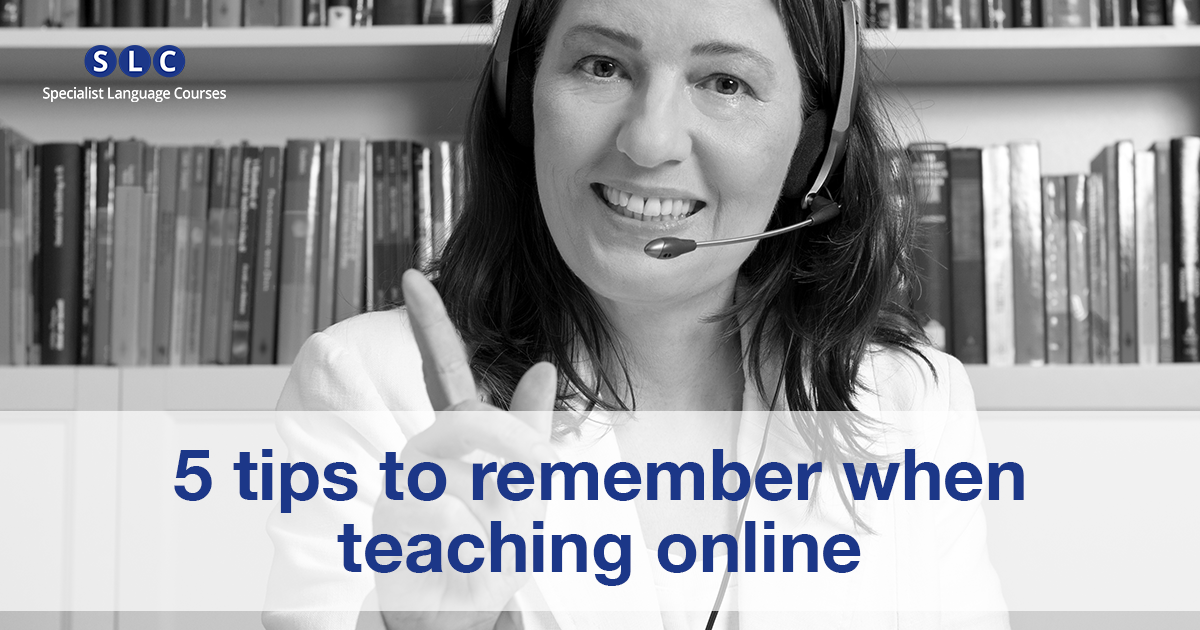With more and more people starting to teach online, here are a few handy tips to help you survive.
- Get the set up right
Find a quiet space to teach from, use a table or desk and think about what your students will be able to see. Remember that even though you are working from home, this is still a classroom and you should be as professional as possible - you don’t want piles of laundry, or family members watching TV on view!
Tech-wise, you should ideally use a high-quality webcam, have a good internet connection and a headset (or earphones). Using a laptop is best, but tablets and even mobiles can be used.
- Prepare, practice and don’t panic!
Think about how to adapt your teaching to an online context. Become familiar with the platform you are going to use and practice!
Think about what resources you can use and how you can present them to your students, for example, Powerpoint slide shows or interactive google doc worksheets. Plan a variety of activities to keep your students engaged and have a simple back-up activity in case things don’t go to plan.
Remember that problems may arise that are out of your control and things might go wrong. Don’t panic! Keep a clear head and try and find a way to resolve, or at least cope with the issue.
- Set expectations
Students may have different ideas on what is appropriate for a live online classroom. Logging in from home means some students might feel a little too comfortable! It’s important to set expectations at the beginning. Think about creating a code of conduct for your online classroom, or set of classroom rules, for example, always have your video on and your face in view, close all other internet browsers, dress appropriately.
- Collaborate
If you work as part of an organisation, communicate with your colleagues. Think about having weekly meetings to support each other. Share ideas and resources or even just have a cup of coffee together to help combat social isolation.
If you are flying solo, look for forums and online teacher groups you can join for ideas and support.
- Move!
Online teaching means you might find yourself sitting down for long periods of time which can take its toll on your body. Make sure you stand up, stretch and walk around between classes and encourage your students to do the same. If you have a long class scheduled, think about having a “comfort break”, to allow you and your students to use the bathroom, or have a glass of water.
Teaching online means you might spend long periods of time inform of a screen, so move away from the computer every now and then, open the window for fresh air and try and expose yourself to some natural light from a window, or if you are lucky enough, some sun!
Good luck!
Online teaching comes with its challenges, and flexibility and the ability to adapt is key. Nevertheless, it also opens up new possibilities and learning opportunities not available in the face to face classrooms. It can be extremely rewarding and allows you to take your expertise to far-away places and those who would not otherwise have access to learning.







